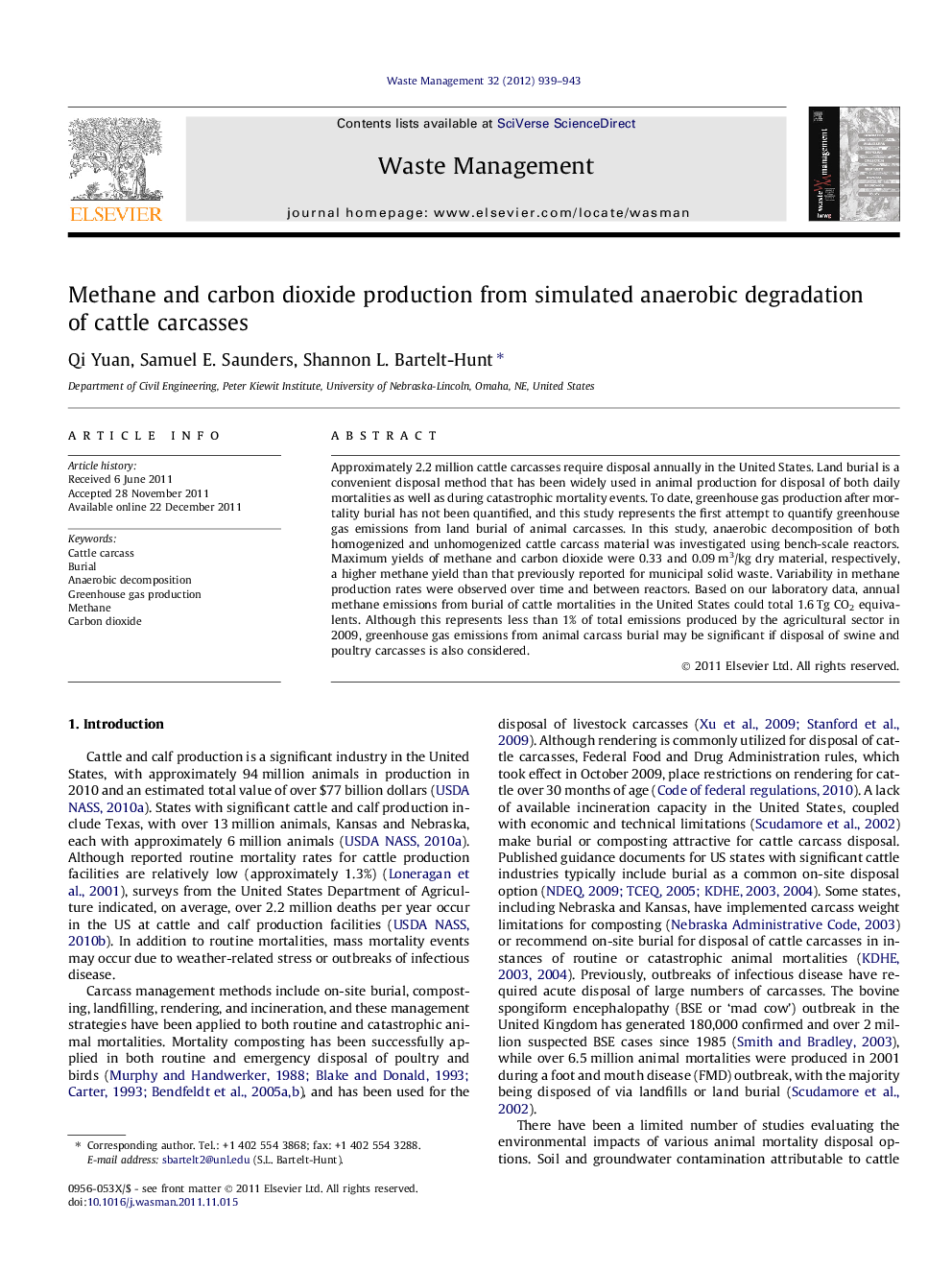| Article ID | Journal | Published Year | Pages | File Type |
|---|---|---|---|---|
| 4471934 | Waste Management | 2012 | 5 Pages |
Approximately 2.2 million cattle carcasses require disposal annually in the United States. Land burial is a convenient disposal method that has been widely used in animal production for disposal of both daily mortalities as well as during catastrophic mortality events. To date, greenhouse gas production after mortality burial has not been quantified, and this study represents the first attempt to quantify greenhouse gas emissions from land burial of animal carcasses. In this study, anaerobic decomposition of both homogenized and unhomogenized cattle carcass material was investigated using bench-scale reactors. Maximum yields of methane and carbon dioxide were 0.33 and 0.09 m3/kg dry material, respectively, a higher methane yield than that previously reported for municipal solid waste. Variability in methane production rates were observed over time and between reactors. Based on our laboratory data, annual methane emissions from burial of cattle mortalities in the United States could total 1.6 Tg CO2 equivalents. Although this represents less than 1% of total emissions produced by the agricultural sector in 2009, greenhouse gas emissions from animal carcass burial may be significant if disposal of swine and poultry carcasses is also considered.
► This study evaluates methane and carbon dioxide production after land burial of cattle carcasses. ► Disposal of animal mortalities is often overlooked in evaluating the environmental impacts of animal production. ► we quantify annual emissions from cattle carcass disposal in the United States as 1.6 Tg CO2 equivalents.
